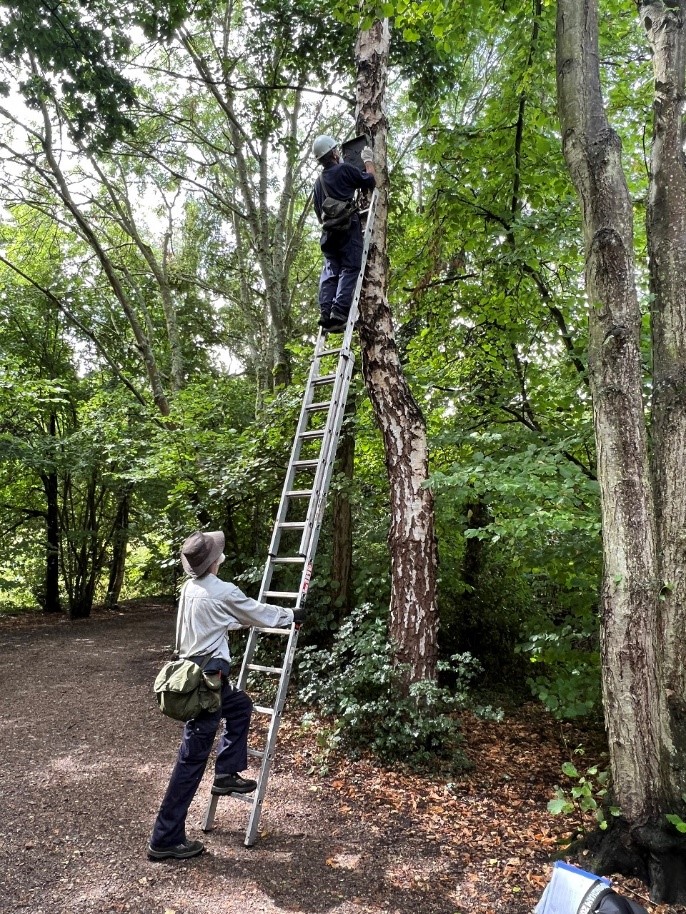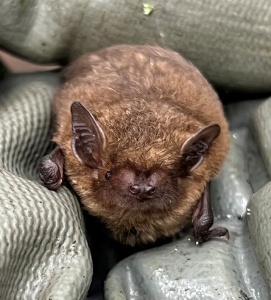
Under Steve Bailey, the Blackwater Valley Countryside Partnership has been putting up bat boxes since 1990.
As most woodland sites within the Valley are relatively young or immature there are few natural roosting sites for bats. The provision of artificial roosting boxes also has the benefit of allowing us to monitor the bat population in the valley, at least to some degree.
When the Trust was formed one of the annual fundraising subjects was “Homes for Bats”. This enabled us to fund new boxes and also encouraged contributions from other sources such as the Surrey Bat Group, Hampshire Bat Group and some local authorities. The number of bat box projects within the valley was boosted, and altogether there are now 13 bat box schemes along with five development mitigation schemes. Among these are 6 sites with 130 bat boxes which were erected as part of the Trust’s bat box project, plus 3 hibernation sites with another 30 boxes.
We aim to monitor bat boxes regularly to check that we are putting them in the best locations, and to learn about the local bat population. During the covid pandemic monitoring was put on hold as there was a fear that the virus could be passed into the bat population. More recently it has become possible to check boxes again but with strict protocols and of course with the appropriate licence. We decided to try and check all our bat boxes during 2022 – 248 boxes to check, and we added or repaired another 13.
The species most often found in boxes is the Soprano Pipistrelle, Pipistrellus pygmaeus (see right). This bat is closely associated with watery habitats, unlike the Common Pipistrelle, Pipistrellus pipistrellus, which is the species you are likely to see around your house.
The other bat which you will find over water is Daubenton’s Bat, Myotis daubentonii. This is known as the Water Bat. It feeds on insects emerging from the lakes, rivers and canals, and we get them regularly on one site. We have only recorded two other species using our boxes, the Brown long-eared Bat, Plecotus auratus, and Natterer’s Bat, Myotis nattereri.
Bat boxes have proved to be a very important tool for monitoring and probably protecting the local bat population. In the first few years around 5-10% of boxes were used, now at our established sites, it is over 50%. This shows the very real difference that the generous supporters of the BVCT have made to local conservation. Thank you all.

